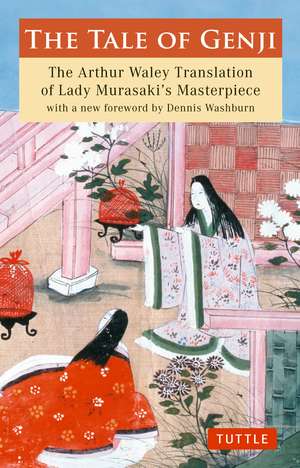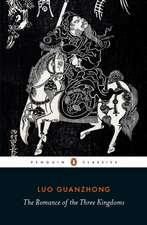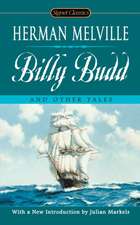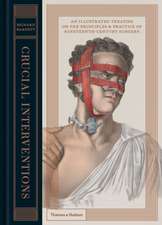The Tale of Genji: The Arthur Waley Translation of Lady Murasaki's Masterpiece with a new foreword by Dennis Washburn: Tuttle Classics
Autor Murasaki Shikibu Traducere de Arthur Waley Cuvânt înainte de Dennis Washburnen Limba Engleză Paperback – 10 mar 2010
Centuries before Shakespeare, Murasaki Shikibu's The Tale of Genji was already acknowledged as a classic of Japanese literature. Over the past century, this book has gained worldwide acceptance as not only the world's first novel but as one of the greatest works of literature of all time.
The hero of the tale, Prince Genji, is a shining example of the Heian-era ideal man—accomplished in poetry, dance, music, painting, and, not least of all to the novel's many plots, romance. The Tale of Genji and the characters and world it depicts have influenced Japanese culture to its very core. This celebrated translation by Arthur Waley gives Western readers a very genuine feel for the tone of this beloved classic.
This edition contains the complete Waley translation of all six books of The Tale of Genji and also contains a new foreword by Dennis Washburn with key insights into both the book and the importance of this translation for modern readers.
| Toate formatele și edițiile | Preț | Express |
|---|---|---|
| Paperback (6) | 48.95 lei 3-4 săpt. | +19.03 lei 4-10 zile |
| Tuttle Publishing – 3 apr 2018 | 48.95 lei 3-4 săpt. | +19.03 lei 4-10 zile |
| CREATESPACE – | 78.06 lei 3-5 săpt. | |
| CREATESPACE – | 95.16 lei 3-5 săpt. | |
| Penguin Books – 23 apr 2003 | 158.58 lei 24-30 zile | +99.68 lei 4-10 zile |
| Tuttle Publishing – 10 mar 2010 | 176.80 lei 3-5 săpt. | +51.04 lei 4-10 zile |
| Stellar Classics – 9 mai 2016 | 83.25 lei 38-44 zile | |
| Hardback (2) | 130.53 lei 38-44 zile | +46.90 lei 4-10 zile |
| EVERYMAN – 17 dec 1992 | 208.29 lei 3-5 săpt. | +46.90 lei 4-10 zile |
| Stellar Classics – 9 mai 2016 | 130.53 lei 38-44 zile |
Din seria Tuttle Classics
-
 Preț: 69.15 lei
Preț: 69.15 lei -
 Preț: 125.76 lei
Preț: 125.76 lei -
 Preț: 79.91 lei
Preț: 79.91 lei -
 Preț: 149.46 lei
Preț: 149.46 lei -
 Preț: 175.57 lei
Preț: 175.57 lei -
 Preț: 115.86 lei
Preț: 115.86 lei - 17%
 Preț: 47.19 lei
Preț: 47.19 lei - 20%
 Preț: 138.61 lei
Preț: 138.61 lei - 17%
 Preț: 77.93 lei
Preț: 77.93 lei - 17%
 Preț: 73.46 lei
Preț: 73.46 lei -
 Preț: 97.18 lei
Preț: 97.18 lei - 39%
 Preț: 80.14 lei
Preț: 80.14 lei -
 Preț: 98.06 lei
Preț: 98.06 lei - 15%
 Preț: 87.83 lei
Preț: 87.83 lei -
 Preț: 108.82 lei
Preț: 108.82 lei -
 Preț: 58.12 lei
Preț: 58.12 lei - 15%
 Preț: 59.44 lei
Preț: 59.44 lei - 15%
 Preț: 59.98 lei
Preț: 59.98 lei -
 Preț: 71.74 lei
Preț: 71.74 lei -
 Preț: 93.31 lei
Preț: 93.31 lei - 15%
 Preț: 48.95 lei
Preț: 48.95 lei - 21%
 Preț: 133.07 lei
Preț: 133.07 lei - 21%
 Preț: 134.74 lei
Preț: 134.74 lei -
 Preț: 63.77 lei
Preț: 63.77 lei -
 Preț: 108.55 lei
Preț: 108.55 lei -
 Preț: 52.84 lei
Preț: 52.84 lei -
 Preț: 222.77 lei
Preț: 222.77 lei -
 Preț: 36.49 lei
Preț: 36.49 lei -
 Preț: 81.81 lei
Preț: 81.81 lei - 27%
 Preț: 75.23 lei
Preț: 75.23 lei -
 Preț: 52.99 lei
Preț: 52.99 lei -
 Preț: 157.13 lei
Preț: 157.13 lei
Preț: 176.80 lei
Nou
33.84€ • 36.77$ • 28.45£
Carte disponibilă
Livrare economică 31 martie-14 aprilie
Livrare express 14-20 martie pentru 61.03 lei
Specificații
ISBN-10: 4805310812
Pagini: 1184
Dimensiuni: 130 x 203 x 55 mm
Greutate: 1.16 kg
Editura: Tuttle Publishing
Colecția Tuttle Publishing
Seria Tuttle Classics
Recenzii
Notă biografică
Arthur Waley (1889-1966) taught himself Chinese and Japanese after being appointed Assistant Keeper of Oriental Prints and Manuscripts at the British Museum. He went on to become renowned as one of the most respected translators of Asian classics into English of his time. His translated works include The Noh Plays of Japan and Monkey.
Descriere
Written centuries before the time of Shakespeare and even Chaucer, The Tale of Genji marks the birth of the novel—and after more than a millennium, this seminal work continues to enchant readers throughout the world.
Lady Murasaki Shikibu and her tale's hero, Prince Genji, have had an unmatched influence on Japanese culture. Prince Genji manifests what was to become an image of the ideal Heian era courtier; gentle and passionate. Genji is also a master poet, dancer, musician and painter. The Tale of Genji follows Prince Genji through his many loves and varied passions. This book has influenced not only generations of courtiers and samurai of the distant past, but artists and painters even in modern times—episodes in the tale have been incorporated into the design of kimonos and handicrafts, and the four-line poems called waka which dance throughout this work have earned it a place as a classic text in the study of poetry.
This version by Kencho Suematsu was the first-ever translation in English. Condensed, it's a quarter length of the unabridged text, making it perfect for readers with limited time.
"Not speaking is the wiser part,
And words are sometimes vain,
But to completely close the heart
In silence, gives me pain."
—Prince Genji, in The Tale of Genji
Cuprins
Acknowledgments
List of Maps and Diagrams
Introduction
1. The Paulownia Pavilion (Kiritsubo)
2. The Broom Tree (Hahakigi)
3. The Cicada Shell (Utsusemi)
4. The Twilight Beauty (Yugao)
5. Young Murasaki (Wakamurasaki)
6. The Safflower (Suetsumuhana)
7. Beneath the Autumn Leaves (Momiji no Ga)
8. Under the Cherry Blossoms (Hana no En)
9. Heart-to-Heart (Aoi)
10. The Green Branch (Sakaki)
11. Falling Flowers (Hanachirusato)
12. Suma (Suma)
13. Akashi (Akashi)
14. The Pilgrimage to Sumiyoshi (Miotsukushi)
15. A Waste of Weeds (Yomogiu)
16. At the Pass (Sekiya)
17. The Picture Contest (Eawase)
18. Wind in the Pines (Matsukaze)
19. Wisps of Cloud (Usugumo)
20. The Bluebell (Asagao)
21. The Maidens (Otome)
22. The Tendril Wreath (Tamakazura)
23. The Warbler's First Song (Hatsune)
24. Butterflies (Kocho)
25. The Fireflies (Hotaru)
26. The Pink (Tokonatsu)
27. The Cressets (Kagaribi)
28. The Typhoon (Nowaki)
29. The Imperial Progress (Miyuki)
30. Thoroughwort Flowers (Fujibakama)
31. The Handsome Pillar (Makibashira)
32. The Plum Tree Branch (Umegae)
33. New Wisteria Leaves (Fuji no Uraba)
34. Spring Shoots I (Wakana 1)
35. Spring Shoots II (Wakana 2)
36. The Oak Tree (Kashiwagi)
37. The Flute (Yokobue)
38. The Bell Cricket (Suzumushi)
39. Evening Mist (Yugiri)
40. The Law (Minori)
41. The Seer (Maboroshi)
Vanished into the Clouds (Kumogakure)
42. The Perfumed Prince (Niou Miya)
43. Red Plum Blossoms (Kobai)
44. Bamboo River (Takekawa)
45. The Maiden of the Bridge (Hashihime)
46. Beneath the Oak (Shiigamoto)
47. Trefoil Knots (Agemaki)
48. Bracken Shoots (Sawarabi)
49. The Ivy (Yadorigi)
50. The Eastern Cottage (Azumaya)
51. A Drifting Boat (Ukifune)
52. The Mayfly (Kagero)
53. Writing Practice (Tenarai)
54. The Floating Bridge of Dreams (Yume no Ukihashi)
Chronology
General Glossary
Clothing and Color
Offices and Titles
Summary of Poetic Allusions Identified in the Notes
Characters in The Tale of Genji
Further Reading


















